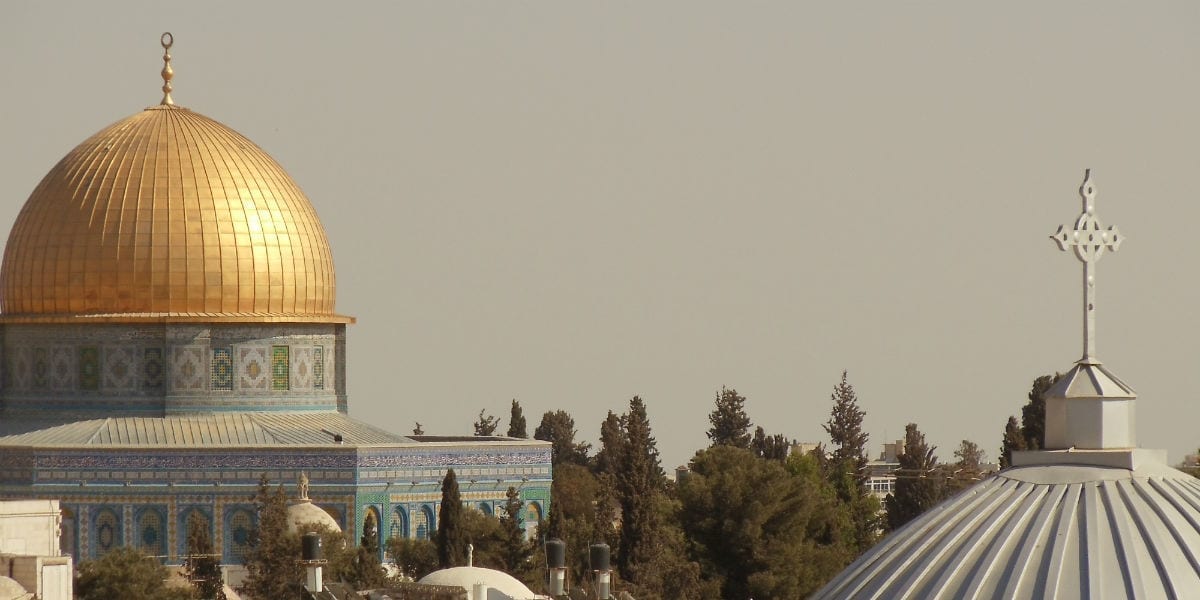Pope Leo XIV – Inaugural Mass Homily
Elected on May 8, 2025, as the 267th successor of St. Peter, Pope Leo XIV’...

Many have a strong opinion have Vatican II, but few have actually read the documents produced by the Second Vatican Council. These non-academic documents were intended to be read by ordinary people and actually provide vision, inspiration and spiritual nourishment. What follows is an overview and guide to the documents showing you the best place to begin and how to lay out a reading plan.
Sixteen ecclesiastical documents, written by a team of several thousand bishops and theologians, based on three years of preparation and four years of prayer and discussion.
It should be no surprise that most people would leave the reading of these documents to the experts, assuming that only the learned could make any sense of them.
But that was precisely what the Popes and fathers of the council did not want. A decision was made before the first document was written that the audience of this council, the readership to which the documents were to be addressed, was not just the academics and clergy. No, the vocabulary of the documents was to be biblical, not scholastic, the style pastoral, not academic, so that the council’s teaching would be accessible to all literate Christians, indeed, even to all people of good will. The documents of Vatican II have since been poured over by experts of all kinds, and indeed should be. Their content is indeed rich and profound. Yet it must be remembered that first and foremost this is was a pastoral council and its documents are like pastoral letters written to encourage, nourish, and enlighten the sheep.

Still, the thick volume of council documents is, at first glance, nonetheless forbidding. Where is the best path of entry to this thick forest of words?
The first thing to point out is that the Church has given everyone an easy, topically organized collection of Council texts that is by far the easiest place to get our feet wet. I’m speaking, of course, of the Catechism of the Catholic Church, one of the enduring achievements of the Pontificate of Pope John Paul II.
Of course, this Catechism is not simply an anthology of Vatican II texts. It draws from all the councils of the church as well as from the entire Catholic tradition, citing church fathers, doctors, and saints. Yet it is thoroughly imbued with the true “spirit of Vatican II ” and includes substantial excerpts from the Council’s documents. It communicates the heart of the Council’s teaching, familiarizes us with the Council’s style, and introduces us to some of the most famous passages of the actual documents.
But of course, we should not be satisfied with this taste of Vatican II. This appetizer should just whet our appetite to feast on the full texts themselves. Each of the Council documents was written to be read from beginning to end. Serious Catholics and students of Catholicism should take up the challenge and dive in.
Which of the sixteen documents should be the first to tackle? The Council itself gives us guidance here by creating three classes of documents: the most important and generally longer are called Constitutions–of which there are four. The “middle-distance” documents, so to speak, are called Decrees and are nine in number. And finally the three documents briefest in length and most narrowly focused in theme are called Declarations.
Among the Constitutions, two stand out and are given a special description. They are called “Dogmatic Constitutions” and cover two topics: Divine Revelation and the Church.
Here we must stop and correct a serious misconception. Many rightly note that Vatican II did not define any new dogmas as did many previous Councils, such as Nicaea, Trent, and Vatican I. It is also true that Vatican II was primarily a “pastoral” council.
Yet it is most decidedly NOT true that Vatican II offers us no serious doctrinal teaching and therefore its authority is not to be taken too seriously. Calling two of its constitutions “dogmatic” makes it very plain that this council does indeed teach doctrine in a most serious way. And while it does not define new dogmas, it passes on, reaffirms, clarifies and develops revealed doctrine in the most authoritative fashion possible short of an infallible definition. The response of the faithful must be “the religious submission of intellect and will” to this important expression of the Church’s Universal Episcopal Magisterium which is an expression of the Papal Magisterium as well, since the successor of Peter signed each one of its documents.
In my opinion, the very best of the dogmatic constitutions to start with just happens to be the shortest and the easiest to read. The Dogmatic Constitution on Divine Revelation, usually known as “Dei Verbum (DV)” from its first two words in the Latin original, is like the stem which roots the council in the rich soil of Scripture and Tradition and draws up the necessary nutrients to make the real bud of the council blossom, which is the Dogmatic Constitution on the Church, “Lumen Gentium” (LG).
The 26 paragraphs of Dei Verbum are divided up into 6 short chapters. You can either tackle the whole thing at once, reading it in less than an hour, or you can read a chapter a day as part of your prayer time. Yes, this document can indeed be approached as spiritual reading, as can Lumen Gentium, since they are moving meditations on God’s Word. Dei Verbum is really a proclamation of the basic gospel, as this quote from the prologue makes clear: “Following then, in the steps fo the Councils of Trent and Vatican I, this Synod wishes to set forth the true doctrine on divine Revelation and its transmission. For it wants the whole world to hear the summons to salvation, so that through hearing it may believe, through belief it may hope, through hope it may come to love.” (DV1)
Dei Verbum was the first Council document that I ever read. I was 19 years old at the time, and remember how shocked I was by how many Scripture quotes it contained. Expecting a dry academic dissertation, I was equally surprised and how the document moved my heart and lifted my spirits even as it enlightened my mind.
Regardless of our degree of biblical literacy, all of us Catholics find ourselves on familiar ground here as we read God’s self revelation to us through words and deeds passed on to us by means of both Scripture and Tradition. We read of the basic story of salvation history beginning in the days of the old covenant and leading up to Jesus Christ, the Word made flesh.
The text reads so smoothly that you have to go back and read some passages another time or two to notice the clear and important nuances this document contains relative to the nature of Tradition, the inspiration and inerrancy of Scripture, the role of the magisterium, and the rule for biblical interpretation. The last chapter of the document deals with the actual use of Scripture in the life of the Church and completely lays to rest the myth that the Catholic Church discourages its members from reading the Bible for themselves. In fact if there is any document you’d want to give a Protestant Christian to change their image of the Catholic Church, this would be the one.

Prepared by your reading of Dei Verbum, its now time to attempt the central document of the council, the Dogmatic Constitution on the Church. Lumen Gentium is a much longer document– 69 paragraphs with several more explanatory notes tacked on afterwards. It is not quite as easy to finish in one sitting; reading one of its 8 chapters per day would be a great plan. It is equally biblical as the shorter Dei Verbum.
In fact its first chapter, entitled “the Mystery of the Church,” begins with a meditation on the many images of the Church in the New Testament. It reaffirms the teaching of Trent that the Church is organized in this world as a visible society, but emphasizes that the church is also an invisible “communio” or communion of persons and that many elements of the Church’s sanctification and truth are found outside her visible confines.
This lays the groundwork for Chapter 2, the People of God, which develops the theme of the Church’s catholicity and universality. All people are called to enter into the unity of the Church, and this chapter describes the different ways people either belong or are related to it. Chapters follow on the hierarchical structure of the Church, the Laity, and Religious and their respective roles.
In the midst of it all is chapter 5 on the Universal Call to Holiness, which many believe to rank among the most important chapters of all conciliar texts, indeed one of the central themes of the Council. The document closes with a meditation on the pilgrim church on earth, which in its living members is always in need of purification and renewal, and finally, on the Blessed Virgin Mary, in whom the Church already exists without spot or blemish.
Now that we’ve read the central document of the council, where do we go from here? Well, it depends on your interests, really. Lumen Gentium is like the hub of a wheel–the remaining council documents are like spokes from the hub. They each spring directly out of a chapter or paragraph of Lumen Gentium and provide directives for pastoral action based on the Constitutions teaching.
For example, the Decree on the Apostolate of the Laity (aka Apostolicam Actuositatem) flows directly from Lumen Gentium’s teaching on the universal call to holiness, the laity, and the charisms. It focuses, as would be guessed by its title, on the role of the laity in carrying out the mission entrusted by the Lord to his Church. Though it covers the assistance that laity are often called on to provide to the clergy in accomplishing their ministry, this document emphasizes more the work that is distinctive of and exclusive to the laity: “The characteristic of the lay state being a life led in the midst of the world and of secular affairs, laymen are called by God to make of their apostolate, through the vigor of their Christian spirit, a leaven in the world.” AA 2. Without a deep spirituality and proper training, the laity won’t be able to rise to the occasion, so this document deals with both topics.
This decree also identifies the key areas where the laity are to make their most distinctive contribution: evangelization through example and word (which includes apologetics) and the renewal of the temporal order, which means bringing influencing political and economic structures in our society in a more human and Christian direction based on justice and the dignity of the human person.
Clearly, this document ranks among the most important for all to read–the laity, to know what is expected of them, the clergy, to know how to lead and train their flock. Likewise the Decrees on the Pastoral Office of Bishops, the Renewal of Religious Life, and the Training of Priests flow from what Lumen Gentium has to say about hierarchy and religious and should go on the reading priority list based on the reader’s state of life.
Lumen Gentium and many of its related documents clearly deals with “family issues” and topics relating to those dwelling within the visible boundaries of the Church–the Church “ad-intra” as Cardinal Suenens, one of the four council moderators, called it.
But the Council, as concerned as it was with Church Renewal, was also determined to address issues of how the Catholic Church is related to those outside its visible boundaries–the Church “ad-extra.” This concern surfaces in virtually all the council documents, and Lumen Gentium is no exception. In paragraph 15, the council notes that baptized members of Christian Churches and ecclesial communities who have not retained full communion with the successor of Peter and in many cases not preserved the fullness of Catholic faith, are nonetheless joined to us in the Holy Spirit. From this paragraph springs the Decree on Ecumenism, which draws out its practical implications. Everyone should read this document which provides an orientation on how to understand and view non-Catholic Christians from both East (the Orthodox) and West (Protestants) and on how to hasten the day when we can celebrate the Eucharist together as one flock under one shepherd.
In the next paragraph of Lumen Gentium, no. 16, the council considers the situation of people who have not yet received the gospel and therefore do not confess Christ. There is tremendous balance in this paragraph. First of all, the truth present in the religion of Jews, Moslems, and others is recognized and honored as “preparation for the gospel.” The council says that these peoples are “related to” or “oriented towards” (the Latin word is ordinarii) the Church in various ways.
It also states that “those who, through no fault of their own, do not know the Gospel of Christ or his Church, but who nevertheless seek God with a sincere heart, and, moved by grace, try in their actions to do his will as they know it through the dictates of their conscience–those too may achieve eternal salvation.” But it often notes that often, “deceived by the Evil One,” such people come to serve creatures rather than the creator or fall into despair. Therefore the preaching of the Gospel is an urgent task and the Church should never neglect to foster the missions.

As if its careful wording were not enough, two documents are offered by the council as commentaries and continuations of this one paragraph. One, the Declaration on Non Christian Religions (Nostra Aetate), is among the shortest of council documents. Nonetheless, it packs a very powerful punch. It lays aside once and for all the idea that Jews throughout history carry the guilt of the crucifixion of Christ and unequivocally condemns all forms of anti-Semitism. It also contains important reflections on Islam that should be read by every Catholic in these days when Muslim terrorist organizations make the daily news. The Decree on the Church’s Missionary Activity (Ad Gentes Divinitum) makes it impossible for any Catholic to conclude that since it is a technical possibility for those who never hear the gospel to be saved, we ought to forget about missionary activity. Although the document focuses on the duty of the entire Church to bring the gospel to unevangelized regions of the earth, much of what it has to say has direct bearing on the “new evangelization” or re-evangelization of the Western world in which all Europeans and North and South Americans are called to be directly involved.
Other than Lumen Gentium, all the documents we’ve recommended so far have been rather short. So are four other documents that generally can be seen as springing from Dei Verbum, Lumen Gentium or the latter’s related documents: the Decrees on the Eastern Catholic Churches, the Means of Social Communications, and Christian Education as well as the Declaration on Religious Freedom (Dignitatis Humanae), the distinctively American contribution to the Council documents. Of course these four are not to be missed.
I’ve recommended shorter documents first for a very practical reason–most of those reading this article are living busy hectic lives, and it is easier to fit shorter reads into such a lifestyle than longer ones.
But longer books are often the most rewarding ones, and should not be forgotten. So as the grand finale to your Vatican II reading plan, I’ll suggest the last two Constitutions, on the Liturgy and on the Church in the Modern World.
First of all, though the reform of the liturgy mandated by Vatican II remain, in some circles, quite controversial, we should note that the Liturgy Constitution (Sacrosanctum Concilium) was the very first Document to be approved by the council fathers since it was the easiest for them to agree upon. There was a tremendous consensus among the bishops, even before they arrived, that the liturgical life of the Church needed serious renewal.
What is so valuable about reading this document is that the reader can see first hand what in fact motivated the bishops, the theological principles behind the reforms, and what in fact the council itself mandated or allowed as distinct from what it left to the post-conciliar church to decide and implement.
There are two dimensions to this conciliar text: 1) theological principles of liturgical worship universal to all Catholic rites, Eastern and Western and 2) specific directives on liturgical reform that pertain to the Roman Rite alone. This Constitution, 130 paragraphs long, deals not just with the Mass but with all the sacraments, the calendar, the blessings or sacramentals, the liturgy of the hours, and the topics of liturgical music and art. Because it covers so much ground and includes practical directives, it does not read as smoothly as the other documents. I’d definitely recommend that you attack it in chunks.
The true “Grand Finale” of the council is the Pastoral Constitution on the Church in the Modern World (Gaudium et Spes). Its 93 paragraphs are the ultimate reflection on the “Ecclesia ad extra” covering such topics ranging from atheism to economics, abortion, and war. It provides tremendous guidance to us who bump up against these issues every day in the press and often meet them in the course of our daily lives as well.
I often hear people criticizing something because it is “pre-Vatican” or contrary to “the spirit of Vatican II .” On the other side of the spectrum, I find very traditional Catholics who blame Vatican II for the shenanigans that go on in their parish or Sunday liturgy.
What is so ironic is that many of those who mouth either praise or criticism of the Council have never read its documents!
We can’t necessarily compel others to read them. But we can certainly read them ourselves, and allow ourselves to be nourished and formed by them. I’d dare say that reading the documents, for all Catholics who can do so, appears to me as a duty. The Good News is that those who seek to discharge this duty find, to their surprise, that it is also a delight.
For a brief excerpt from one the Second Vatican Council’s documents, read PEACE FLOWS FROM JUSTICE.
No Comments